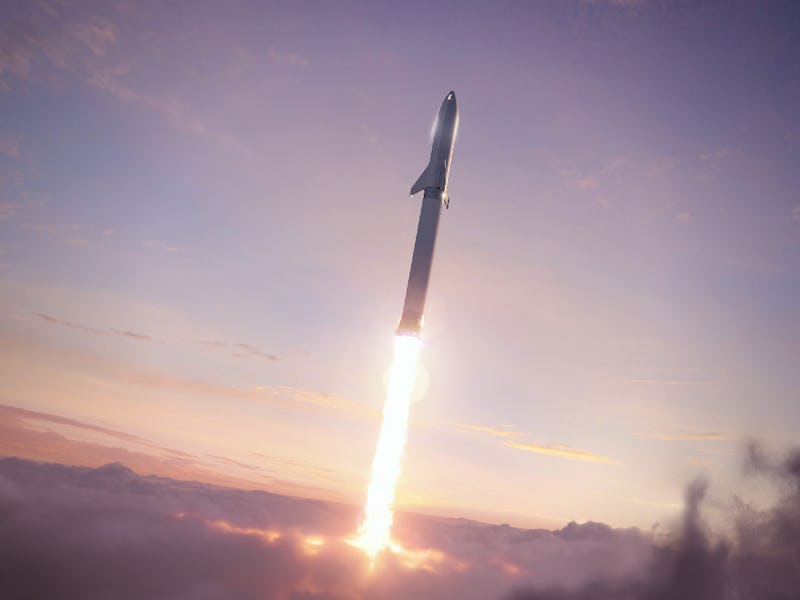SpaceX's Starship could take humans to Moon within next decade
The rocket may be ideally suited for manned lunar missions, according to SpaceX leadership.

Starship, the stainless steel behemoth set to send humans to Mars, could end up taking humans to the Moon in just five years time.
SpaceX CEO Elon Musk made the declaration back in March 2019, amid growing interest in what the company was developing at its Boca Chica facility in Texas. Starship was pitched in its original “BFR” form back in September 2017, but the new rocket taking shape at Boca Chica had a uniquely shiny design.
This is #3 on Inverse’s 20 wildest space discoveries of 2019
In March, Musk declared via Twitter:
Would be great to have a competitive, commercial program to build a moon base that is outcome-oriented (not cost-plus), so you only get paid for safe delivery of cargo.
It was a response to American vice president Mike Pence, who had declared at the time that NASA would return humans to the Moon within the next five years. In response to a question about whether Starship could send humans in that same time period, Musk stated “I think so.”
As development of the Starship continues, these plans have gradually come into focus. A SpaceX lunar base probably wouldn’t look like the Mars base for a number of reasons, but the versatile design of the Starship would mean SpaceX is not constrained to focusing on just one task.
SpaceX Starship: returning to the Moon
Starship is designed as a multi-purpose vehicle, capable of replacing the Falcon 9 for satellite launches while also offering the chance to send up to 100 people at a time into space.
SpaceX has not kept its ambitions a secret. Its rocket is designed for full reusability, so humans can lift off and land on Mars, before using the same ship to return home. The Raptor engine’s use of liquid oxygen and methane enables it to harvest resources from the Martian surface.
Following Musk’s comments, other SpaceX officials expanded on the plans to send humans to the Moon on Starship, too. Paul Wooster, SpaceX’s principal Mars development engineer, explained in October 2019 that the Starship’s versatility enabled the company to “deliver very large payloads to the Moon, set up and operate lunar bases.” Company president Gwynne Shotwell declared in the same month that the company would send humans and cargo to the Moon by 2022. The company is already planning to send Japanese billionaire Yusaku Maezawa around the Moon in 2023.
Lunar bases may look quite different to the planned Mars city. Musk explained in October that humans may struggle to find sources of carbon for creating more fuel on the Moon, meaning they may have to sift through deposits in craters.
As 2019 draws to a close, Inverse is revisiting the year’s 20 wildest space stories. Some are awe-inspiring, some are bordering on science fiction, and some are just, well, wild. This is #3. Read the original article here.